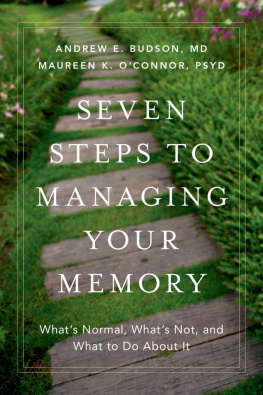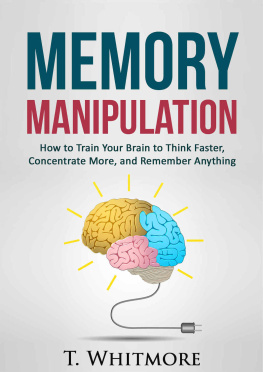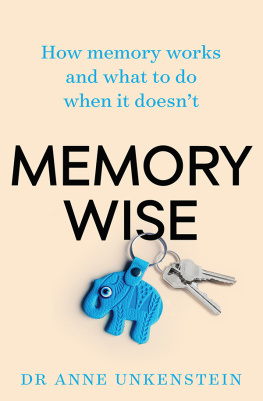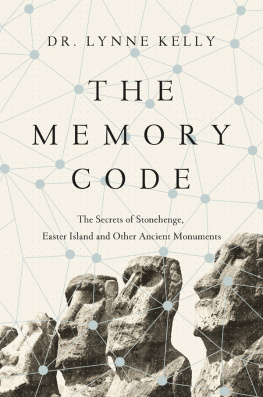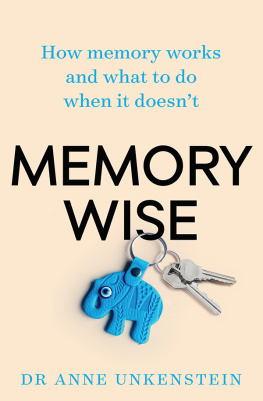Yoneyama - Hiroshima traces time, space, and the dialectics of memory
Here you can read online Yoneyama - Hiroshima traces time, space, and the dialectics of memory full text of the book (entire story) in english for free. Download pdf and epub, get meaning, cover and reviews about this ebook. City: Berkeley;Hiroshima-shi (Japan);Japan;Hiroshima-shi, year: 1999, publisher: University of California Press, genre: Politics. Description of the work, (preface) as well as reviews are available. Best literature library LitArk.com created for fans of good reading and offers a wide selection of genres:
Romance novel
Science fiction
Adventure
Detective
Science
History
Home and family
Prose
Art
Politics
Computer
Non-fiction
Religion
Business
Children
Humor
Choose a favorite category and find really read worthwhile books. Enjoy immersion in the world of imagination, feel the emotions of the characters or learn something new for yourself, make an fascinating discovery.

Hiroshima traces time, space, and the dialectics of memory: summary, description and annotation
We offer to read an annotation, description, summary or preface (depends on what the author of the book "Hiroshima traces time, space, and the dialectics of memory" wrote himself). If you haven't found the necessary information about the book — write in the comments, we will try to find it.
Yoneyama: author's other books
Who wrote Hiroshima traces time, space, and the dialectics of memory? Find out the surname, the name of the author of the book and a list of all author's works by series.
Hiroshima traces time, space, and the dialectics of memory — read online for free the complete book (whole text) full work
Below is the text of the book, divided by pages. System saving the place of the last page read, allows you to conveniently read the book "Hiroshima traces time, space, and the dialectics of memory" online for free, without having to search again every time where you left off. Put a bookmark, and you can go to the page where you finished reading at any time.
Font size:
Interval:
Bookmark:
1. Labor and Imperial Democracy in Prewar Japan, by Andrew Gordon
2. Complicit Fictions: The Subject in the Modern Japanese Prose Narrative, by James A, Fujii
3. The Making of a Japanese Periphery, 17501920, by Kren Wigen
4. The Abacus and the Sword: The Japanese Penetration of Korea, 18951910, by Peter Duus
5. Authenticating Culture in Imperial Japan, by Leslie Pincus
6. Splendid Monarchy: Power and Pageantry in Modern Japan, by T. Fujitani
7. Marketing the Menacing Fetus in Japan, by Helen Hardacre
8. Japans Total Empire: Manchuria and the Culture of Wartime Imperialism, by Louise Young
9. Mirror of Modernity: Invented Traditions of Modern Japan, edited by Stephen Vlastos
10. Hiroshima Traces: Time, Space, and the Dialectics of Memory, by Lisa Yoneyama
Time, Space, and the
Dialectics of Memory
Lisa Yoneyama

University of California Press
Berkeley and Los Angeles, California
University of California Press, Ltd.
London, England
1999 by
The Regents of the University of California
Library of Congress Cataloging-in-Publication Data
Yoneyama, Lisa, 1959
Hiroshima traces : time, space, and the dialectics
of memory / Lisa Yoneyama.
p. cm. (Twentieth-century Japan ; vio)
Includes bibliographical references and index.
ISBN 0520-085868 (alk. paper)
ISBN 0520-085876 (alk. paper)
1. Hiroshima-shi (Japan)History
Bombardment, 1945. I. Title. II. Series.
D767.25.H6Y66 1999
940.5425dc21 | 9831739 |
CIP |
Printed in the United States of America
9 8 7 6 5 4 3 2
The paper used in this publication meets the
minimum requirements of American National
Standards for Information SciencesPermanence
of Paper for Printed Library Materials,
ANSI Z39.48-1984.
Hiroshima Traces is a product of unfolding dialogues. It grows out of, and has undergone numerous transformations as a result of, the conversations and other interactions I have had with many individuals over the years. Intellectual trajectories are full of wonder. They are shaped by unanticipated personal encounters, both within and outside academia, and this book reflects the many pleasurable, unexpected, and sometimes painful turns that I have made during the years in which it has been in progress. I can at long last thank all those who have contributed in many different but equally valuable ways to my research and writing.
The intellectual and philosophical guidance I received from two teachers, Tsurumi Kazuko and Murai Yoshinori at Jchi University in Tokyowhere I majored in German language studies in the early 1980s and then in international relations as a graduate studenthas greatly influenced my outlook on society and culture. In large part, this study remains faithful to the sensitivities these two scholars communicated to me about the necessity of attending to local specificities even when analyzing global political, social, and economic structures.
While I was a graduate student in the Anthropology Department at Stanford University, Harumi Befu, Renato Rosaldo, and Sylvia Yanagi-sako guided me through the changes that were going on in the field of cultural anthropology during the mid-1980s. They nurtured me, as they did many others, with a rare blend of critical intellectual sophistication and down-to-earth manner. Through them I especially learned that academic engagements can and must go hand in hand with attentiveness to issues of power and to the political milieu within which our works are produced. At Stanford I also received warm encouragement and had many valuable discussions with other teachers and classmates.
In Hiroshima I had the tremendous good fortune of meeting individuals who openly shared their views and sometimes their lifelong observations on questions concerning Hiroshimas history, city planning, issues concerning hibakusha (that is, those subjected to the atomic bomb or radiation), local cultures, politics, and other related matters. I especially want to thank And Shji, Akiba Tadatoshi, Ejima Motoko, Ejima Shsaku, James Foard, Funahashi Yoshie, Hamamura Kyko, Kasuga Kisuyo, Kat Masaki, Kishimoto Shinz, Kobayashi Masanori, Maruyama Kichi, Matsubayashi Shunichi, Matsumoto Hiroshi, Murakami Sugako, Nakahara Hideko, Nakahara Shunsuke, O Sngdk, O Yang-hye, Ohmuta Minoru, Ohtsu Akira, Saeki Toshiko, Sat Izumi, Satoyoshi Kenji, S Yn-si, Soeda Masataka, Tawara Genkichi, Ubuki Akira, Wakabayashi Setsuko, Yakushinji Mariko, Yamada Tada-fumi, Yi Chu-ho, Yi Ki-u, Yoshinaka Yasumaro, Yoshino Makoto, and Yoshino Kazuko. They generously assisted me in numerous ways. Many of their views have been incorporated into the book and I have provided specific references whenever possible.
Certain members of two local organizations, Hiroshima o Kataru Kai and Genbaku Higaisha Shgen no Tsudoi, including Chu Sk, Iwamoto Noriko, Hara Hiroshi, Kwak Pok-sun, Kond Kshir, Kuboura Hiroto, Kuwahara Chiyoko, Miyagawa Hiroyuki, Numata Suzuko, and Yamazaki Kanji, deserve special gratitude. First and foremost, they shared memories about their immediate experiences of the atomic destruction. They also generously offered candid accounts of their and others testimonial activities, the citys and the nations current politics, and other problems concerning hibakusha. They patiently and openmindedly responded to each and every inquiry I made, as they have done and will no doubt continue to do for the many researchers, journalists, and writers who have visited or will visit Hiroshima in the future. I want especially to thank Toyonaga Keisabur, whose spiritual robustness and profound optimism about the possibility of building dialogues and networks have greatly encouraged me. Jung Yeong-hae gave me a warm welcome to Hiroshima and while we roomed together shared her perceptive and deeply engaged thoughts and feelings about Hiroshima, as well as about Japanese society in general. Her unique and precious companionship assured me that sisterly and scholarly relationships are more than compatible.
In 1991, when living in Santa Cruz, California, I met a number of scholars at the University of California, Santa Cruz, who offered crucial suggestions and insights on my work in both formal and informal settings. Many of them became valuable teachers, friends, and colleagues. I am especially grateful to David Anthony, Dilip Basu, James Clifford, Christopher Connery, Guillermo Delgado, Norma Klahn, Martia Sturken, and Anna Tsing.
The most significant turning point in this work, and to a great extent in my entire scholarly orientation, came when I took up a position in the Literature Department at the University of California, San Diego, and began teaching cultural studies and Japanese studies. This move forced me to cross the disciplinary boundaries that separate anthropology, literary studies, and cultural studies and radically expanded my views about potential readers and audiences. The departments interdisciplinary, transnational, and historical emphasis also stimulated me to further consider the materiality and historicity of Hiroshimas textual and discursive representations. bear significant imprints of this disciplinary reorientation. I especially thank Ann duCille, Rosemary George, Judith Halberstam, George Mariscal, Roddey Reid, Rosaura Snchez, Shelley Streeby, William Tay, Don Wayne, and Winifred Woodhull for extending their moral and intellectual encouragement. Two individuals deserve particular mention: Lisa Lowe, whose caring mentorship has assisted me so much in responding to the demands of teaching and writing, and Masao Miyoshi, whose venturesome spirit has always inspired me. Eiji Yutanis scrupulous bibliographic attentiveness as a professional historian as well as librarian has facilitated my research in every possible way. Teaching has been a stimulating and learning experience and I would particularly like to acknowledge the thoughtful feedback I received from many graduate and undergraduate students.
Font size:
Interval:
Bookmark:
Similar books «Hiroshima traces time, space, and the dialectics of memory»
Look at similar books to Hiroshima traces time, space, and the dialectics of memory. We have selected literature similar in name and meaning in the hope of providing readers with more options to find new, interesting, not yet read works.
Discussion, reviews of the book Hiroshima traces time, space, and the dialectics of memory and just readers' own opinions. Leave your comments, write what you think about the work, its meaning or the main characters. Specify what exactly you liked and what you didn't like, and why you think so.

